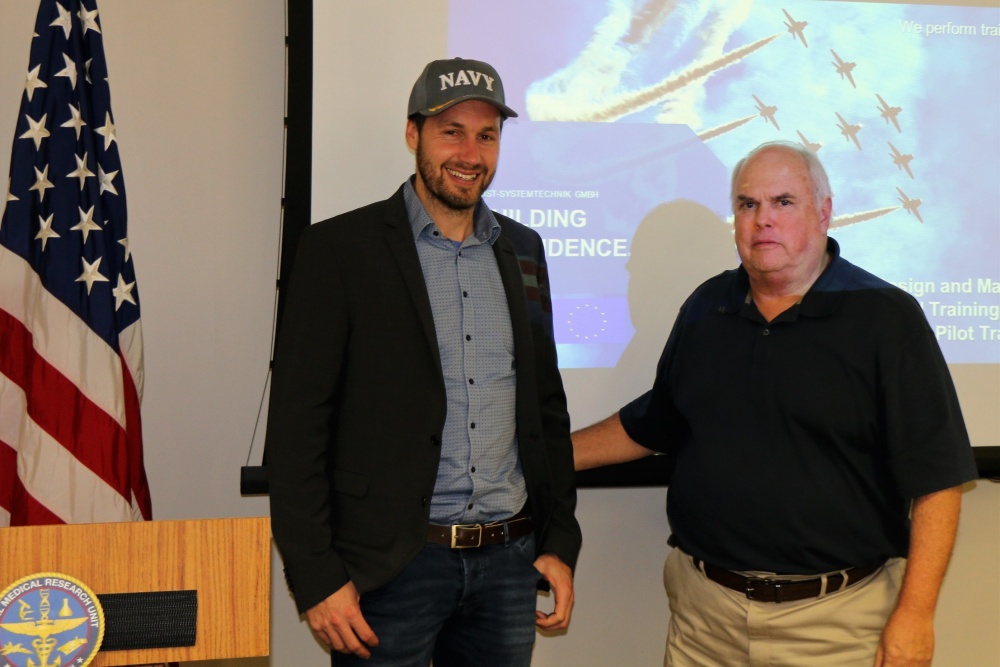| Research through Collaboration, ONR Global Visiting Scientist at NAMRU-Dayton |
Released: 11/27/2018
| Story by Megan Mudersbach
| 
Advancing basic research through collaboration continues to be essential to NAMRU-Dayton. Recently, team members of our Engineering and Technical Support Services Department worked and learned from Johann Schwandtner, mechanical engineer at AMST, Austria and visiting scientist from the Office of Naval Research Global (ONRG) Visiting Scientist Program.
“The benefit of working with Johann was the insight we gained from his experience developing motion algorithms for the Desdemona, a motion device similar to the Kraken. The knowledge of individuals like Johann is an invaluable tool for helping to avoid set-backs and providing heading toward the highest quality motion control methods,” said Cortland Etgen, Oak Ridge Institute for Science & Education participant working at NAMRU-Dayton.
Etgen is the motion team lead for the Kraken, which means he designs motion control algorithms for the device and researches new control strategies for improved motion realism. Essentially, calculations are packaged and sent as commands for the Kraken to properly respond to.
The ONR Program supports short-term travel opportunities for foreign/international scientists to the United States to socialize new Science & Technology ideas or findings with the Naval Research Enterprise.
Patrick Rose, Science Director for Synthetic Biology at the London Office ONRG, said “the Visiting Science Program allows ONRG to help build long-term partnerships for Naval Research & Development with globally leading technology hubs for little investment from the Navy's side.”
“International scientists are often eager and excited to get the exposure and develop new partnerships with the Navy,” said Rose, “The result is that the Naval Research Enterprise is able to explore new avenues of technology development for current research challenges.”
According to Captain Richard Folga, Head of the Engineering and Technical Support Services Department at NAMRU-Dayton, “Johann represents the only other organization in the world doing what we do with a wealth of operational experience conducting training and research with the Desdemona.”
As a part of the command mission our scientists work to mitigate spatial disorientation through collaborative research efforts.
“The insight that AMST could provide us in developing our offline motion control solutions translates into achieving our goals for spatial disorientation mitigation,” said Capt. Folga. “I think ONR Global is a great outlet for that collaboration.”
To close his time at NAMRU-Dayton, Schwandtner held a seminar to discuss his focus at AMST, Austria, which is researching and developing design optimizations for various flight simulations.
“The Desdemona program has a full ten year head start on us at NAMRU-Dayton. We built our motion control team from the ground up with very little experience,” said Capt. Folga.
Less than two years since completing operator training and developing motion washout capability necessary for authentic man in the loop control of aircraft or other vehicles, the Kraken team completed the first research project with NASA and is preparing for the next. |
|
|
|